
Ancistrus is a genus of nocturnal freshwater fish in the family Loricariidae of order Siluriformes, native to freshwater habitats in South America and Panama. Fish of this genus are common in the aquarium trade where they are known as bushynose or bristlenose catfish. In the aquarium hobby they are often referred to as bushynose or bristlenose plecos instead, but this may lead to confusion as "pleco" usually is used for Hypostomus plecostomus and its allies and is often used as a catchall term for any loricariids remotely resembling that species.

Loricariidae is the largest family of catfish, with 92 genera and just over 680 species. Loricariids originate from freshwater habitats of Costa Rica, Panama, and tropical and subtropical South America. These fish are noted for the bony plates covering their bodies and their suckermouths. Several genera are sold as "plecos", notably the suckermouth catfish, Hypostomus plecostomus, and are popular as aquarium fish.

The genus Panaque contains a small number of small to medium-sized South American suckermouth armoured catfishes that are notable for being among the very few vertebrates that feed extensively on wood. In addition, algae and aufwuchs are an important part of the diet, and they use their rasping teeth to scrape this from rocks. These fish are also popular aquarium fish, where the sound of scraping as these fish forage for food is easily audible.

Pseudorinelepis genibarbis is a species of armored catfish native to Brazil, Peru, and Ecuador where it is found in the Amazon basin.

Pterygoplichthys, sometimes collectively known as janitor fish, is a genus of South American armored catfishes. These fish are commonly known as sailfin armoured catfish or sailfin plecs, especially in the aquarium trade.
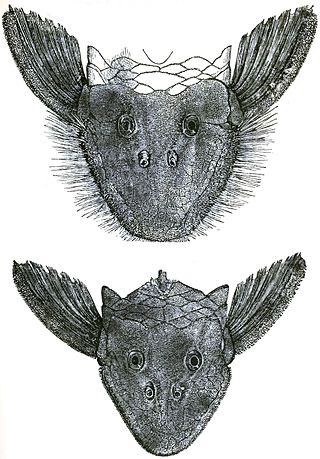
Pseudancistrus is a genus of suckermouth armored catfishes native to South America.

Hypancistrus is a genus of loricariid catfish originating from the Amazon basin in South America. Unlike many of the other Loricariids, however, some Hypancistrus species are more carnivorous and enjoy meat in their diet. Hypancistrus species are popular aquarium fish, including such popular fish as the zebra pleco and Queen Arabesque pleco.

The firewood catfish a species of South American pimelodid catfish, is the sole member of the genus Sorubimichthys. Known by locals along the Amazon Basin as peixe-lenha, the firewood catfish is so called because it is of little eating value and is often dried and used for firewood.
Pogonopoma is a genus of armored catfish native to rivers in south and southeast Brazil.
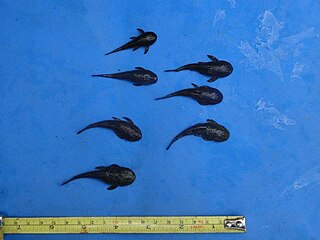
Rhinelepis is a genus of South American armored catfish.
Nannoptopoma is a small genus of catfishes of the family Loricariidae. This genus includes two species, N. spectabile and N. sternoptychum.
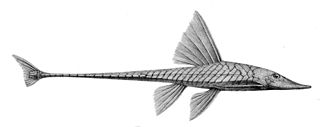
Sturisoma is a genus of armored catfishes native to Central and South America.
Dekeyseria is a genus of suckermouth armored catfishes native to tropical South America.

Megalancistrus is a genus of large suckermouth armored catfishes native to South America.
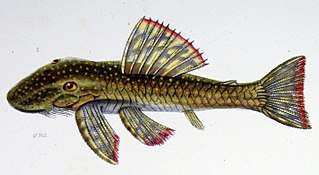
Lasiancistrus is a genus of suckermouth armored catfishes. They are native to South America and Panama.

Pseudacanthicus is a genus of medium to large-sized suckermouth armored catfishes native to South America, where found in the Amazon and Orinoco basins, as well as rivers of the Guianas. They are primarily found in fast-flowing waters, sometimes relatively deep. They are sometimes kept in aquariums.
Pseudolithoxus is a genus of suckermouth armored catfishes with five described species from the basins of the Orinoco, Casiquiare and upper Rio Negro in Venezuela. Additionally, a possibly undescribed species is known from the Trombetas and Nhamundá rivers in Brazil.

Acanthicus adonis, the adonis pleco or polka dot lyre-tail pleco, is a large species of armored catfish. It was originally described from the lower Tocantins River in Brazil, but individuals resembling the species have also been recorded from Amazonian Peru. The species is occasionally seen in the aquarium trade, but its massive adult size and territorially aggressive behavior means that a very large tank is required. These fish are opportunistic omnivores.
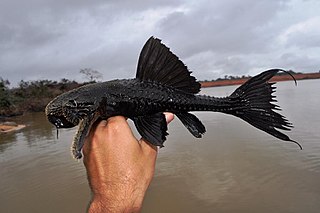
Acanthicus hystrix, the lyre-tail pleco, is a species of armored catfish native to the Amazon, Tocantins–Araguaia and Orinoco basins. It is typically found at various depths on a rock or rock–gravel bottom in the main channel of rivers in places with moderate to strong current, although it also occurs in slow currents. The species is occasionally seen in the aquarium trade, but its adult size and territorially aggressive behavior means that a very large tank is required.
Pseudolithoxus tigris is a species of armored catfish endemic to Venezuela where it is found in the upper Orinoco and Ventuari River basins. This species grows to a length of 9.4 centimetres (3.7 in) SL.

















